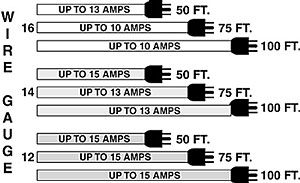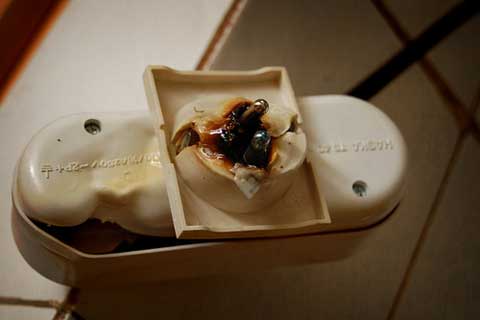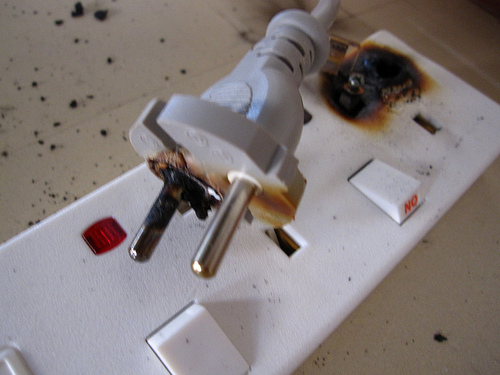What’s the Right Extension Cord Length for My Tools?

Most of us spend very little time thinking about what extension cord to use for a project (I’m guilty too). For christmas lights, it tends to be thin and green, easy concealed. When using the electric chainsaw, grab the orange one, highly visible for safety.
But there is actually a lot more to consider than which color to use. And violating this can potentially ruin your power tools and/or cause a fire.
So how do we know if the extension cord size we’re using is safe?
First, determine the distance you’ll be from the outlet. You’ll want to find the shortest cord you need for where you are working.
Next, find the amount of amps you will be using. All power tools have an amperage rating, it’s required to be printed on the tool. Medium sized drills are around 4-5A. My bandsaw is 7A. Shop vacs weigh in around 10A, and circular and compound miter saws are easily found in 15A sizes. In our power-hungry society, it’s easy to get high amperage tools.
Along with the shortest length needed, you also want enough thickness (wire gauge) to safely carry the amps being used by your tool. Most hardware store-style extension cords run from 16 to 12 gauge As you can see on this chart, you’d best avoid using 16 gauge extension cords from 50′ up for anything over 13A (sorry, guy who wants to bevel thick beams 100′ away from his house). In fact, to go 100′ away and feel decent about using a high-power saw, you’ll want a 12 gauge or thicker extension cord.

The longer the cord, the more internal resistance it has. Increased resistance lowers the available voltage and amperage, which causes forces tool’s motor to work harder, and hotter. Too much and it burns out. Sadly, I’ve seen this exact situation ruin a very expensive Bosch rotary hammer. Even with thick, low gauge cords, there’s a limit to how far you can daisy chain before you end up toasting your gear.
Using a power tool with a thin/long extension cord also generates a lot of heat in the cord and plug itself. That heat can easily reach the point of melting the insulation, causing a short circuit and a fire.
Two links for more info:
http://www.housepainting-guru.com/extension-cords.html
http://www.electrical-contractor.net/Leviton_Hints3.htm#ImproperCord
And, for those who like to know how much voltage is lost due to the gauge and length of their wiring, this voltage drop calculator is very handy.
Lastly, a gallery of burnt out plugs and wires. Click any of the pics for the corresponding story/website/info.











